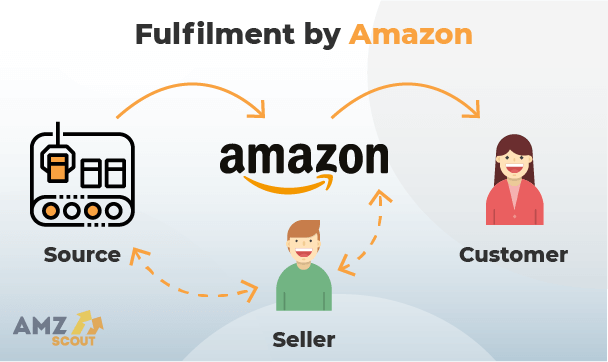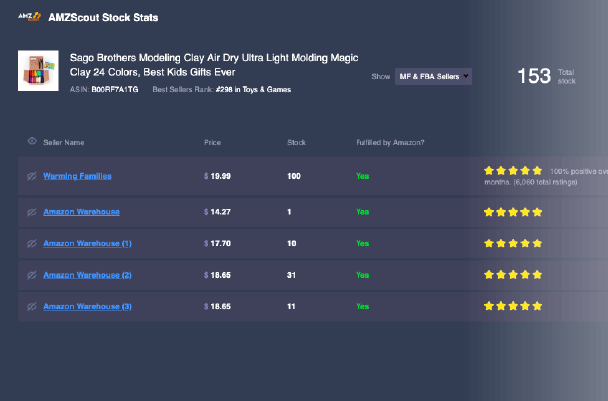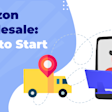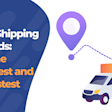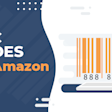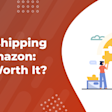Order Fulfillment: 4 Strategies, Main Challenges, and Advice
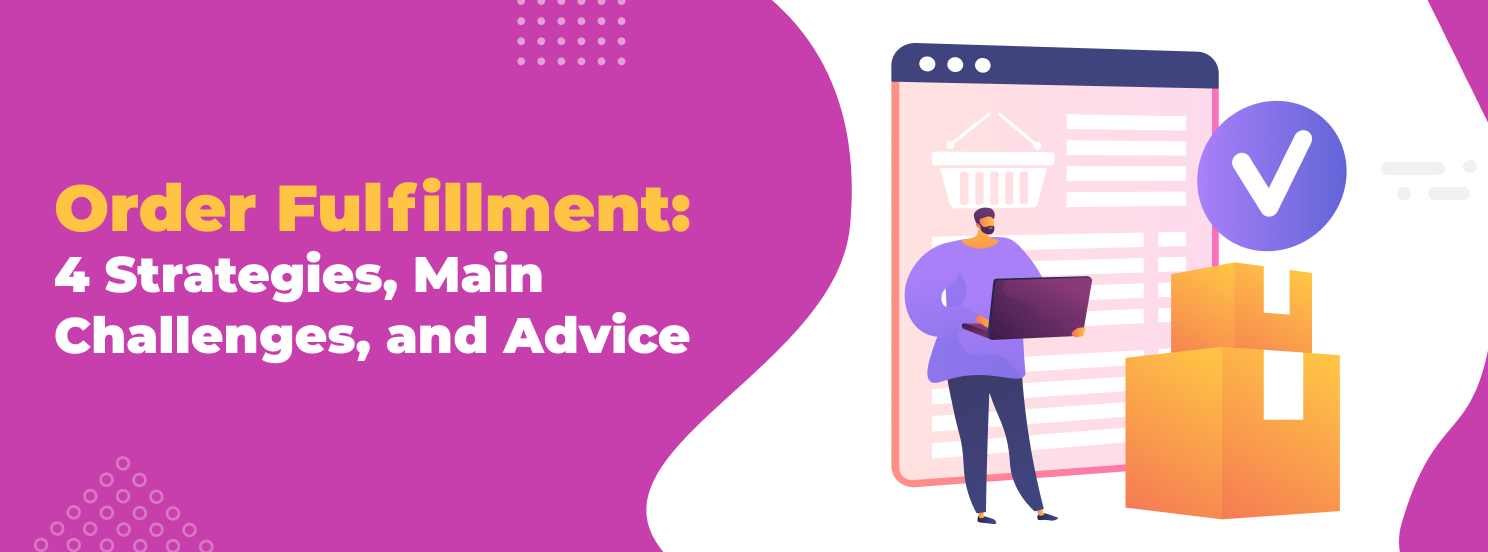
The eCommerce journey doesn’t end when a customer completes a purchase. After a sale, an eCommerce merchant must fulfill that order by delivering the products to the buyer. This process is a key part of selling online. It can have a big impact on the success of your business.
Table of contents
In this post, we’ll break down everything you need to know about order fulfillment including its meaning, how it works, and how you can optimize the process to get the best results.
What is Order Fulfillment In Supply Chain Management?
The definition of order fulfillment is the process of ensuring customers receive their purchased goods. It involves everything from storing goods in a warehouse to preparing the items and ultimately delivering them to customers.
A strong order fulfillment strategy is essential to providing a great customer experience. When someone buys a product, they expect it to arrive at their door fast and without issue. Many will judge the business based on how well they meet these expectations. If you fail to meet their requirements, many will refuse to buy from you again. This can significantly impact your business’ reputation as they’ll leave negative reviews and share their negative experience with their peers.
How Does the Order Fulfillment Process Work?
While the exact details vary based on your fulfillment strategy, there are some core steps involved in fulfilling any online order. Let’s examine these further.
Step 1. Receiving
eCommerce fulfillment starts by getting your goods to the location(s) from where they will be sent out. This is a straightforward process if you fulfill your own products. After you receive your products from your supplier, you simply need to store them at the appropriate in-house location. This could be your own warehouse or some extra space in your office.
Getting your products to their fulfillment location will be a little more involved if you don’t plan to fulfill them yourself. If you partner with a third-party logistics service (3PL), you’ll need to send your products to their fulfillment center. When the 3PL receives the goods, they’ll add your inventory to their warehousing locations. Each item is then clearly organized into specific storage locations.
Step 2. Picking and Packing
The remaining steps of the eCommerce order fulfillment process occur after a customer’s order. Once a shopper completes the checkout, you or your logistics provider will need to gather the item(s) from storage. This process is known as picking.
With a 3PL, the picking process typically starts by printing a packing slip that contains a list of the order items and their storage location. This list is given to the warehouse associate that will get the products.
If you fulfill your own products, printing a packing slip may not be necessary. If you only have a few products and a small number of storage locations, you’ll likely already know where to grab the items.
Once all the order items are picked, you then need to pack them and prepare them for delivery. In addition to boxes and packaging tape, you may need to include other packaging materials like bubble wrap to keep your orders safe.
If you use a 3PL, they will choose the appropriate packing materials to ensure that your products aren’t damaged during delivery. Some will charge for these materials while others will include them for free.
Step 4. Shipping
When the order is ready, it’s the time to ship it to the customer. In most cases, shipping will be done through a carrier with US coverage. The most popular carriers are USPS, UPS, and FedEx. Shipping through these carriers requires you to buy a shipping label.
If you use a 3PL, they will usually buy it for you and then charge you the cost. Some have partnerships with their preferred carriers, while others will look at the costs from multiple carriers to help you get the best price. With a total self-fulfillment strategy, your delivery team will handle transporting the goods. Overall, shipping costs tend to be lower when using a 3PL. This is because many services work exclusively with carriers to get discounted rates.
Once the order is in transit, it’s vital to provide customers with shipment tracking information. Doing so will ensure that customers know where their goods are and when they will arrive.
Order Fulfillment Strategies
There are a variety of order fulfillment strategies for eCommerce companies. The best method for you depends on your sales channels, your order quantities, and your internal resources. Here are the main order fulfillment strategies.
1. Third-Party Fulfillment
A third-party fulfillment strategy involves working with a logistics company, often referred to as a third-party logistics service (or 3PL), to handle the entire order fulfillment process for you. This method brings the advantage of not needing the infrastructure and resources necessary for quality order fulfillment. 3PL companies also get discounted shipping rates from carriers. However, keep in mind that 3PL services will charge fulfillment fees for each order.
The top 3PL providers typically have their own software to help oversee the process. This software can connect to eCommerce platforms like Shopify. The connection allows the 3PL to receive the order details for each purchase on your site. They can then use the information to accurately fulfill the order.
Several of the top eCommerce marketplaces have their own 3PL services. These services simplify order fulfillment for third-party sellers. The marketplace stores the products and ships them out with each customer order.
The best example of a marketplace 3PL service is the FBA program by Amazon. With fulfillment by Amazon, the eCommerce giant handles every aspect of order fulfillment including customer service and reverse logistics (more on this later). Plus, the service is easier to use than others. You don’t need to worry about connecting some external software to your website. Instead, you simply send Amazon your products and manage your inventory from your Seller Central account.
2. Partial Third-Party Fulfillment
With partial third-party fulfillment, eCommerce companies handle part of the process themselves while outsourcing the rest of the process to a third party. Specifically, companies will handle warehousing and storing their inventory while delivery is handled by carriers like UPS. This strategy is usually employed by large retailers (Target, Walmart, etc.) that have the resources to set up and manage their own warehouses and distribution centers.
3. Self-Fulfillment
With the self-fulfillment strategy, you handle the entire fulfillment process yourself. This method works for two types of companies. The first is local businesses with the tools to deliver to nearby customers. The second is large-scale eCommerce companies like Amazon that can set up their own local delivery networks in different locations.
Self-fulfillment has the benefit of not having to pay fulfillment fees. However, you do need to have the extensive resources required to both store all your products and make the deliveries yourself.
4. Dropshipping
Dropshipping is another fulfillment method where you outsource the process to another party. However, it works in a notably different manner. With dropshipping, you list and sell products before purchasing them from the suppliers. When a customer makes an order, you pass the details to the supplier who then packs and ships the items.
Challenges of Order Fulfillment
On the surface, the order fulfillment process is rather straightforward. However, accurately fulfilling orders (especially if you have a lot of them) can come with several challenges.
1. Demand Fluctuations
For many eCommerce companies, certain products are more popular at different times of the year. These demand fluctuations make order fulfillment more complicated. For example, if you typically process 50 orders per day but that increases to 200 per day around the holidays, you may not have the staff and necessary resources to handle all the orders.
2. Inaccurate Order Information
Fulfillment challenges arise when customers give you inaccurate information. For instance, someone enters the wrong address or misreads the product description and purchases the wrong item. Obviously, it is hard to accurately fulfill an order if some of the information is not correct. Unfortunately, this is often something that you won’t catch until the issue has already occurred.
3. Reverse Logistics
Reverse logistics is another order fulfillment challenge. What is reverse logistics? It is the process of accepting and processing returns and refunds. To process returns you need a system that enables customers to initiate them. This often includes having to buy the shipping labels for them. You also need the resources (warehouse space, staff, etc.) to receive and deal with the returned merchandise once it arrives.
Order Fulfillment Tips
Here are some tips you can use to improve your eCommerce order fulfillment
1. Forecast Your Demand
Forecasting demand by analyzing past sales trends helps you predict how much inventory you need to have on hand. Knowing this information ensures that you have both enough products and resources to fulfill your orders. It also keeps you from overstocking products. This can lower your storage fees while ensuring your warehouse space is being used efficiently.
If you don’t have your own sales data yet, you can still forecast demand using Amazon research software. For example, with the AMZScout Pro Extension, you can check similar products to analyze their sales patterns. The tool shows you its monthly sales total and you can view the Product history to see the specific number of units sold each day.
2. Communicate With Partners and Customers
Solid communication is an often overlooked but important part of eCommerce fulfillment. You want to make sure all of your logistics services, carriers, and anyone else involved in the process is on the same page. Doing so will mitigate mistakes while ensuring everything runs smoothly.
It’s also vital to communicate with customers. They not only want fast deliveries but also to be kept in the loop throughout the process. The easiest way to do this is to send shipping confirmations when your orders are sent out by the carrier. If you sell through Amazon FBA, this will automatically be done for you.
Many other 3PL providers will do this for you as well. If you use in-house or partial third-party fulfillment, you’ll need to come up with an efficient system for sending customers shipping updates.
3. Leverage Third-Party Services
The easiest way to optimize order fulfillment is to use 3PL services. Logistics providers are masters of order fulfillment. They can process a large number of orders and do so without errors.
If you’re new to business and really want to capitalize on a third-party service, selling through Amazon using the FBA program can be even more beneficial. Amazon not only handles every part of fulfillment, but they also offer world-class 2-day deliveries and a simple easy-to-use service. By offloading fulfillment to Amazon, you can save time that is then spent focusing on your business.
Selling on Amazon also has the advantage of high-quality seller tools like AMZScout. These solutions let you save even more time by helping you to quickly find popular Amazon keywords and research products. Plus, you can use the Stock Stats tool to see how much inventory competitors keep on hand. You can use this information to easily optimize your own inventory planning.
4. Research Potential Dropshipping Products
Dropshipping is a convenient way to start selling online. It’s low cost and you don’t risk losing your investment if your products don’t sell. That said, it’s still essential to thoroughly research any item that you want to dropship. You may not need to pay for inventory, but going through the effort of listing a poor product that doesn’t sell will cost you time and will leave you frustrated.
The Amazon Online Arbitrage and Dropshipping Extension simplifies the process of finding products well suited to dropshipping. With the tool, you can analyze products directly on Amazon to see the number of other FBA sellers and if Amazon sells the products. Dropship products can be competitive so knowing this information helps you eliminate low potential items.
The extension also shows other key dropshipping product criteria. This includes whether the item is a private label product, if it has hazardous materials or if other listings have Prime delivery. Good dropshipping items won’t be hazardous or have any Prime competitors, and they obviously won’t be private label.
In addition to providing these key metrics, the extension also includes a useful profit calculator. With it, you can enter your costs and sales price to calculate your potential profit margin. The tool automatically populates the Amazon fees so you don’t need to add them yourself.
Conclusion
A great order fulfillment process helps create a satisfying buying experience for your customers. Whether you sell on Amazon or your own eCommerce site, be sure to follow the advice in this post to ensure your fulfillment is smooth and efficient. Doing so will lead to happier customers and more seamless business operations.


